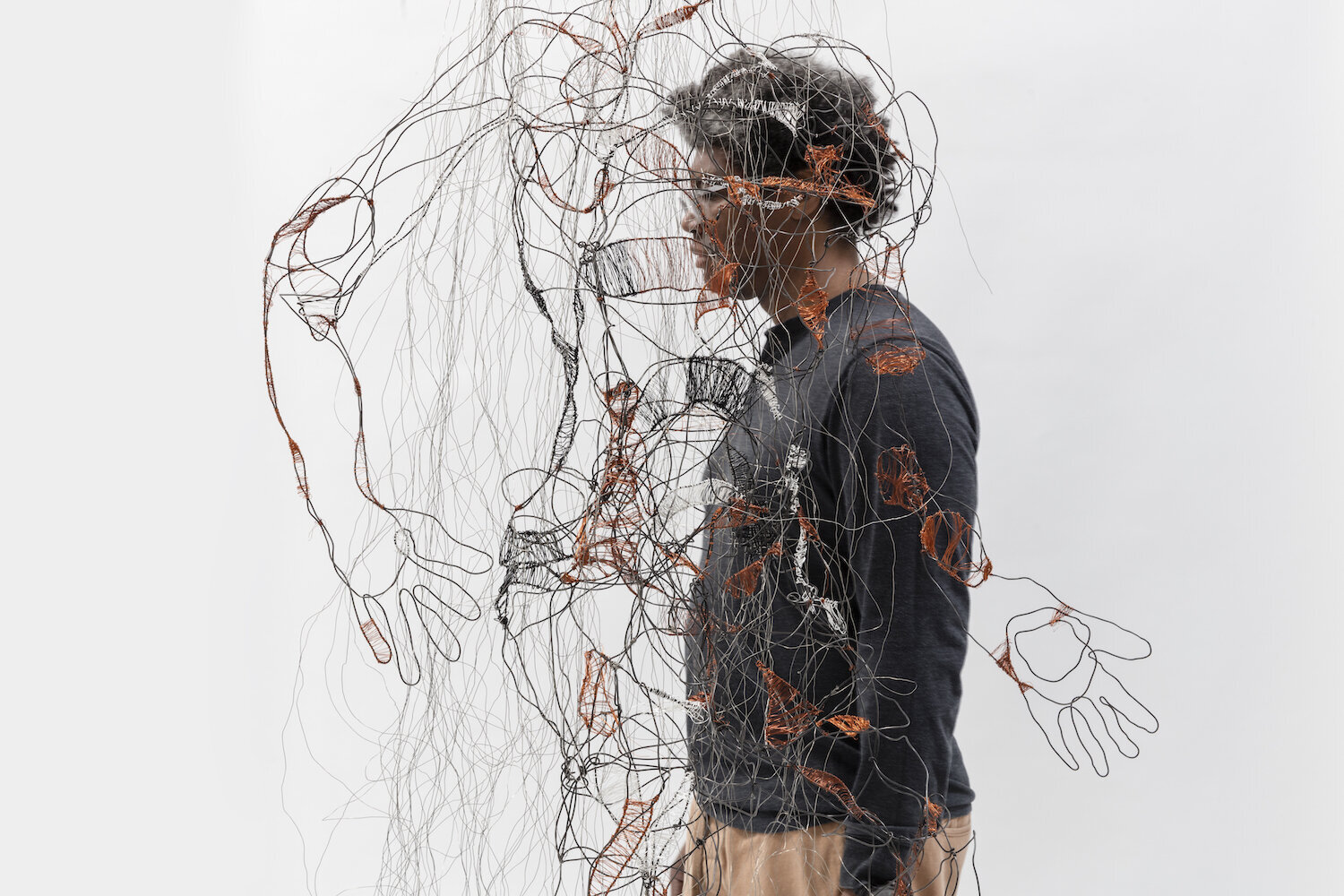Sycorax SERIES
Sycorax Scene II, 2020
Sycorax Series
2015 - 2019, Mixed wire - Black iron wire armature, copper, aluminum and brass wire, Wire cascade - 10’x6’, Figure - 6’x2’, dimensions variable
“Wire allows us to link art worlds to metals and thus computer hard drives, vascular stents, data cable piano strings, guitar strings and fences, in wire we are given finance empire environmental decay exploitation and enclosure. In wire we are given sound. The bees are lessons through which we become agentive learners and readers. As prompts that readjust our relationship with physiography while leaving room for wonder”.
Katherine McKittrick, speaking about Charmaine Lurch’s work at the Holberg Symposium, 2019. On Paul Gilroy’s Planetary Humanism
The work titled Hand and foot of Sycorax, are wire relief paintings that are part of a body of work that draw from rich narratives and research on the character Sycorax, Caliban’s mother, an absent presence in William Shakespeare’s The Tempest (c. 1611). Sycorax is contextualized in Sylvia Winter’s deciphering of ‘the human’ (2014), Katherine McKittrick’s grounding wire imageries (2019); Dana, who’s arm passes through a wall and time in Octavia Butler’s Kindred (1979); M. Norbese Phillip description of movement of feet on the deck of Zong (2008) and of hands in Saidiya Hartman’s chapter, “Manual for general housework” (2019). Framed by Sycorax and these textual references, the linearity of the wire hand and foot is also a topography, delineating both archival and conceptual territories of embodied experiences on lands and waters. As with other aspects of my practice, this topography gestures to the innumerable shards of histories of slavery, concepts of indigeneity and global colonialism scattered across our unique experience and reckoning of place and time.
Tied to the local, attuned to borders and boundaries, we can notice how Black people move and inhabit spaces and times. The hand and foot of Sycorax attends to histories of cross-border walkers, planters, the pickers, planners, individuals, and groups whose arrivals and departures contribute to urban and rural landscape of Canada and more-so, the world, for generations. The shimmering copper and aluminum wires forms emit an undulating hope in gestures of movement: flight, dance, sowing, harvesting, and deep roots of people in and on the land, as such the artwork is about joy, remembrances, and love. Rather than disembodied, the gestural physical element of the foot undulates and upturns in an attitude of joyous dance and the hand, poised, is a communicative symbol for both stop and welcome. Both limbs hold a sense of presence and place, reflecting the ways in which belonging informs my practice.









